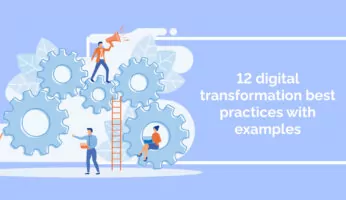
A skills gap can emerge for a range of reasons. These include internal and external factors. Internal factors include staff shortages from retirements, high employee churn rates and poor succession planning and training, while external factors include changes to immigration patterns, economic conditions and an aging population in the local area where talent is usually sourced.
When it has become apparent that your organization is suffering because of a skills gap, an in-depth analysis can help pinpoint the causes and aid in strategically planning to not only fill the existing gap, but to put strategies in place to help ensure it does not happen again. While no organization is immune from staff turnover, there are steps that can be taken to develop a more stable workforce that is resilient enough to survive – and thrive – during times of challenge as well as opportunity.
It is important to identify, analyze and address skills gaps because it can affect the bottom line, as well as employee happiness. Without the right people deployed in the right place at the right time, business objectives can be missed, new technologies might not be as effective, and staff morale can suffer. As more companies undergo digital transformation, it is imperative to keep existing team members’ skills updated, as well as hiring people with the abilities required to succeed.
In short, a skills gap analysis involves a lot of questions, but the answers will provide the information you need to power forward as an organization with a motivated team equipped to do their jobs well.
How do you analyze a skills gap?
When conducting a skills gap analysis, organizations need to ask themselves a series of key questions and, critically, ensure they are answered honestly. There will be no benefit to this sort of analysis if an organization is not prepared to uncover uncomfortable truths. However, once the reasons for a skills gap have been laid bare, the organization can then get on with the important task of optimizing the workforce to prevent problems in the future.
Here are some questions to raise in a skills gap analysis:
- What skills do we value as a company?
- Have we conducted an audit of all employees to find out what skills they have, whether they are using all their skills, and if there are skills we didn’t know about?
- Do we have any upcoming projects that may require upskilling of existing employees or additional recruitment?
- What skills will our employees need to meet the challenges and business targets that lie ahead?
- Are we introducing new technologies and will these require upskilling?
- What training are we undertaking and can we do more here?
- How are we measuring employee performance?
- Do we give our team members constructive feedback?
- Do we give underperforming team members the opportunity to improve?
- Why do people leave our organization?
- Are there any political or demographic changes that might affect our ability to properly staff our organization?
- Are economic conditions – either good or bad – going to have an impact on our ability to meet our goals with our current team?
That is by no means an exhaustive list of questions to kick off a skills gap analysis, but the questions can be adapted to suit your organization’s needs. It can seem like a daunting process, but there are some smart ways to get started with a skills gap analysis.
Start with a skills audit
Undertaking a skills audit of all employees is a good place to begin a skills gap analysis. This process can be very revealing. You may discover you have employees with skills or qualifications that are simply not being used. Or you may find some employees have a natural aptitude for their work without any formal training or qualifications. These are generally positive surprises to emerge from a skills audit. When this happens, it is important to take steps to leverage existing skills to their maximum potential, and develop people who are highly skilled but have not received formal training.
What is your company strategy?
With a clear idea of the skills within an organization, it makes sense to ensure you have a clear company strategy. What are your company’s goals? Are you confident targets will be met? Are there any big ambitions you’d like to achieve? And, above all, does your workforce understand the strategy so they are on board for the journey?
Again, the analysis involves more often-probing questions, which can be challenging and confronting, but it is important to be honest from the outset.
Once you have a clear strategy in mind, you can get on with the important task of determining what skills need to be developed to ensure future success. Again, more questions need to be asked and answered honestly:
- What roles are needed to reach these goals?
- Is there an inventory of skills for each of these roles?
- Do you have these skills within the organization already?
- Will you need to train people within the organization or hire new people?
- Can new people be hired on a temporary basis or will you need to add permanent employees to the payroll?
- Are there people who will need to be let go?
- Will any forthcoming retirements affect the overall company skillset?
Dealing with the data
Asking and answering a lot of questions will inevitably result in a lot of information. But we are in an era where data is power – as long as it is properly analyzed and acted upon. The data gleaned from skills audits, interviews with employees, performance reviews and HR data, such as staff turnover figures, can be aggregated and analyzed for smart decision-making with skills management software. This will make the analysis process far less time-consuming and produce easily digestible data that can be used for smart decisions.
Once you have a clear picture of the strengths and weaknesses within your organization, strategic plans can be made to plug existing skills gaps and reduce the risk of gaps emerging in the future. Good data is essential to this process – only then will you be able to work out how to move forward with best practices in employee training, employee retention, recruitment, and overall workforce optimization.
WalkMe Team
WalkMe spearheaded the Digital Adoption Platform (DAP) for associations to use the maximum capacity of their advanced resources. Utilizing man-made consciousness, AI, and context-oriented direction, WalkMe adds a powerful UI layer to raise the computerized proficiency, everything being equal.



